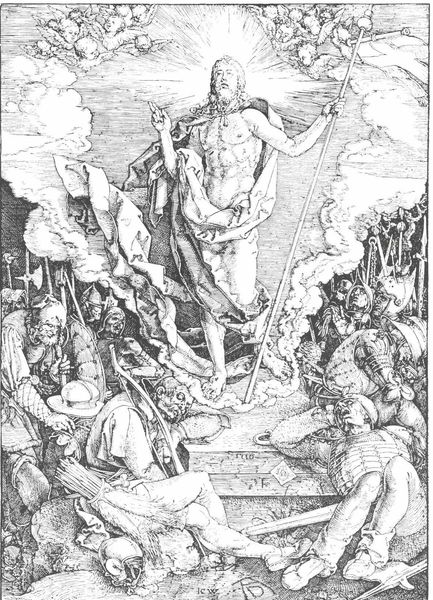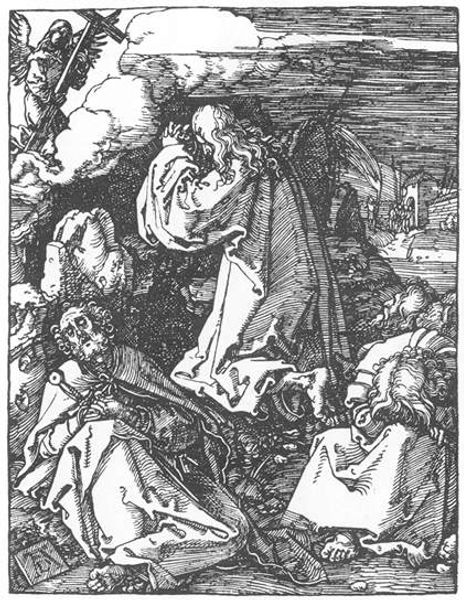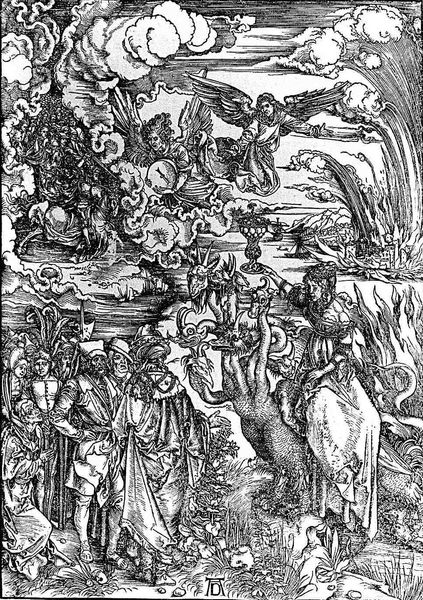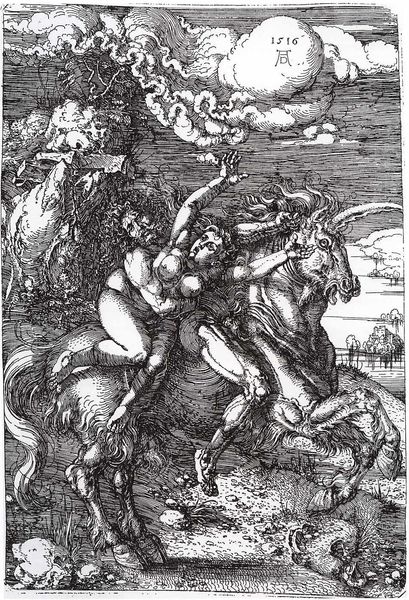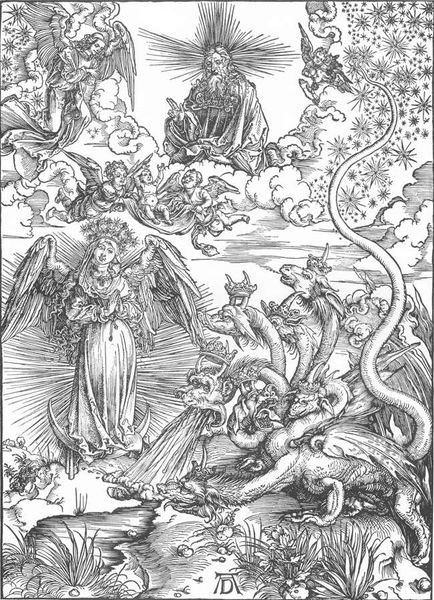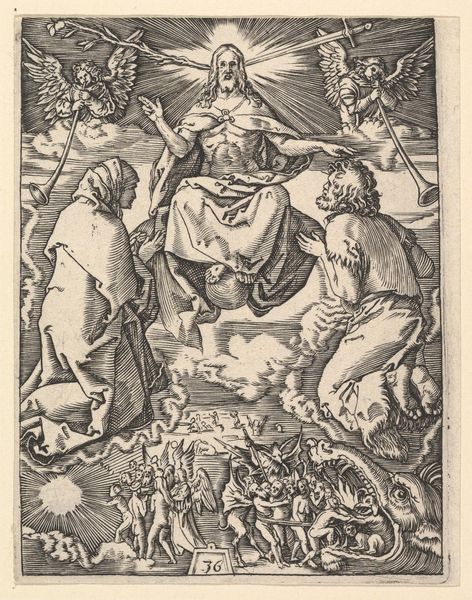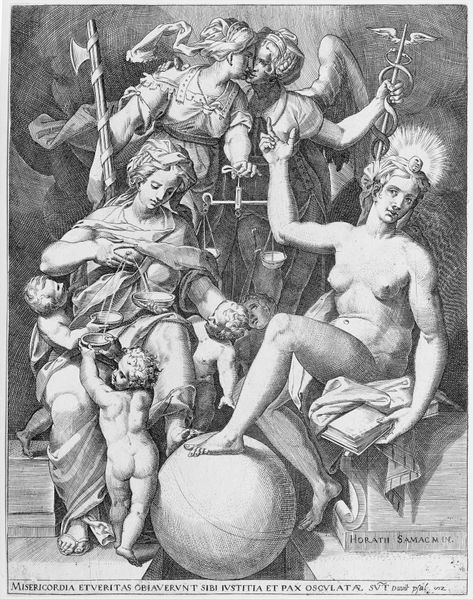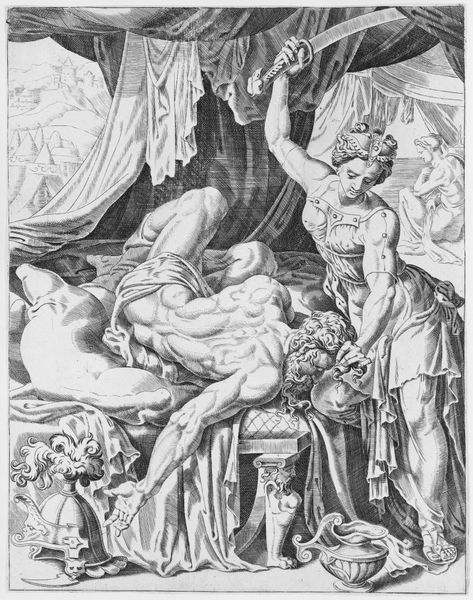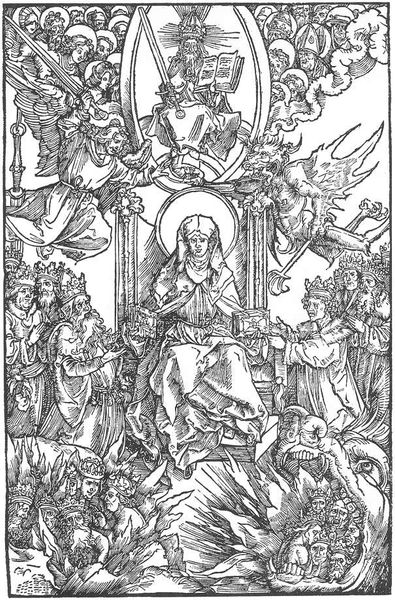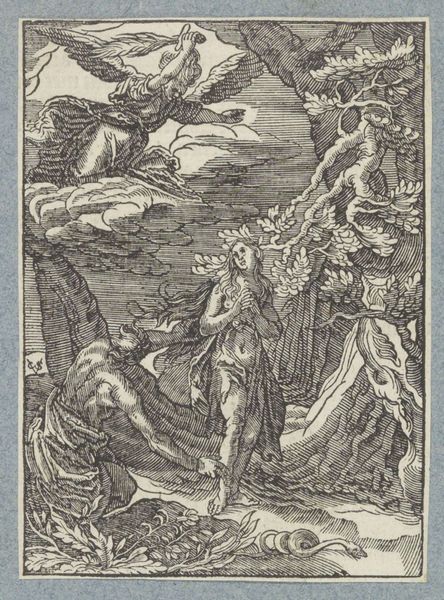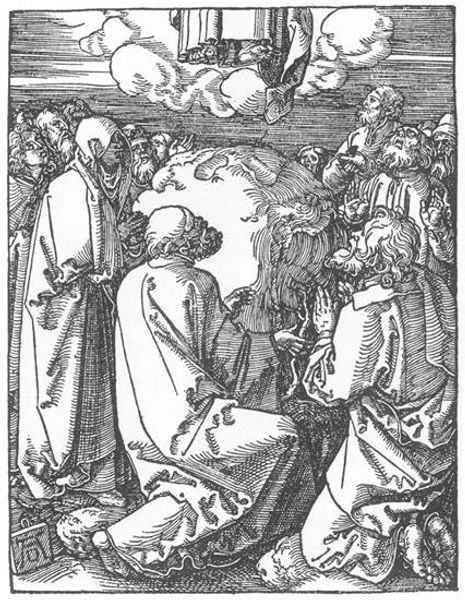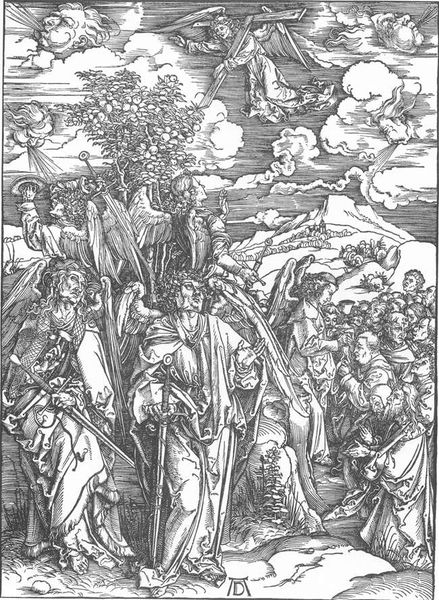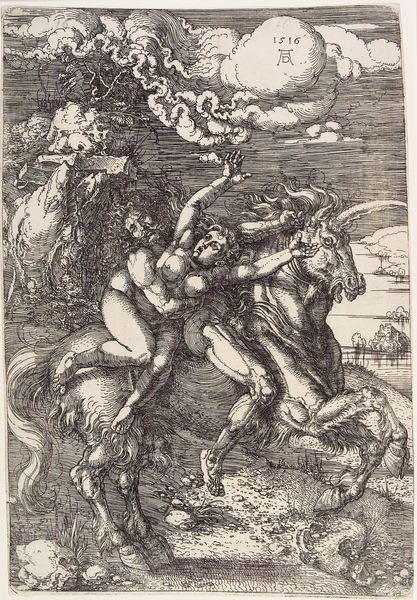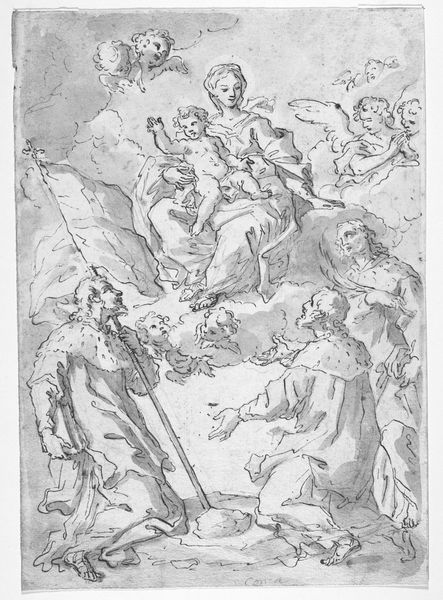
drawing, print, ink, woodcut, engraving
#
drawing
#
medieval
#
allegory
# print
#
pen illustration
#
figuration
#
ink line art
#
ink
#
woodcut
#
christianity
#
history-painting
#
northern-renaissance
#
engraving
#
realism
Copyright: Public domain
Curator: Here we have Albrecht Dürer's woodcut, "The Last Judgement," created in 1511. It's currently housed in the British Museum in London. Editor: My immediate reaction is a visceral one. It's stark, high contrast, and profoundly unsettling. The detail crammed into such a small space overwhelms. Curator: Indeed. Dürer masterfully employs hatching and cross-hatching to create a dynamic range of tonal values within a black and white composition. Consider the symbolic weight carried by the formal organization; the sharp, vertical lines accentuate a hierarchy of divine judgement. Christ is centered above. Editor: And beneath him, the stark depiction of humanity divided speaks volumes about the socio-religious environment of the time. I am curious about the labour invested in each carved line; each precise cut carrying intense meaning. How were such large prints circulated, impacting local beliefs? Curator: Precisely. The formal realism merges Northern Renaissance aesthetics with Medieval thematic concerns, all converging on that single print. The very lines evoke both tangible form and divine drama. I find myself parsing elements influenced by semiotics and theological doctrine. Editor: While semiotics are revealing, let us also note that printing became accessible by ordinary people and became influential; and Dürer and his workshop workers were a central force of such print culture. I consider this not only a masterclass of design but a symbol of how images produced en masse contributed to cultural reform in early modernity. The tactile sense in which Dürer used simple ink for maximum impact must be taken into consideration. Curator: It does offer an impactful message. Through form, technique and precise visual grammar, "The Last Judgement" encapsulates anxieties about faith and destiny. The angels serve as more than narrative devices, becoming formal structural support within Dürer's scheme. Editor: True, it certainly stimulates thoughtful examination. For me, reflecting upon "The Last Judgement," I keep reflecting upon the people creating it and distributing such material, the economy behind them, and all their socio-political agendas being played in the act of image creation and circulation.
Comments
No comments
Be the first to comment and join the conversation on the ultimate creative platform.
